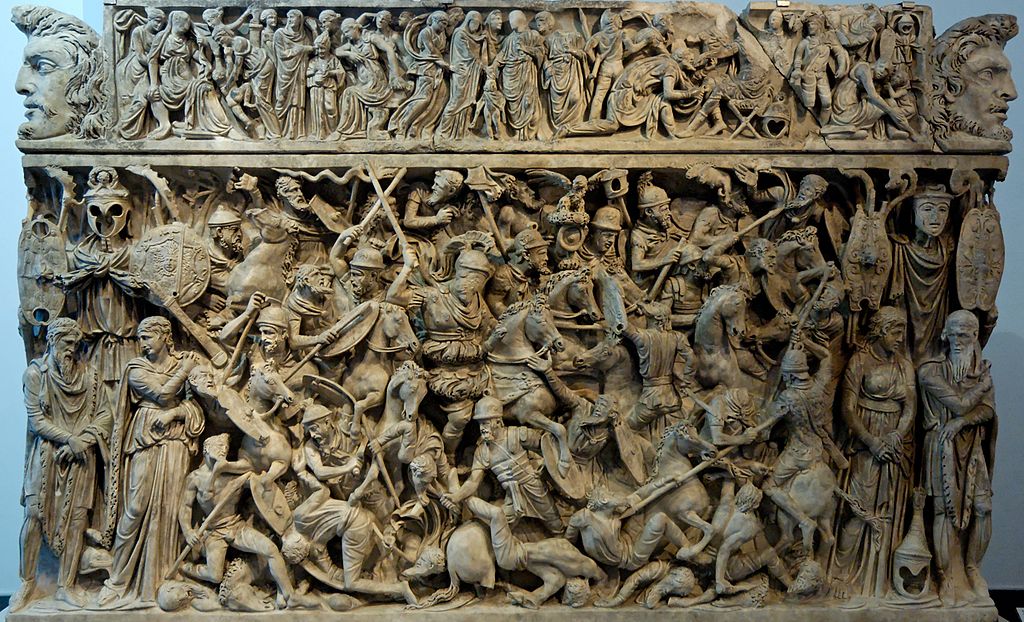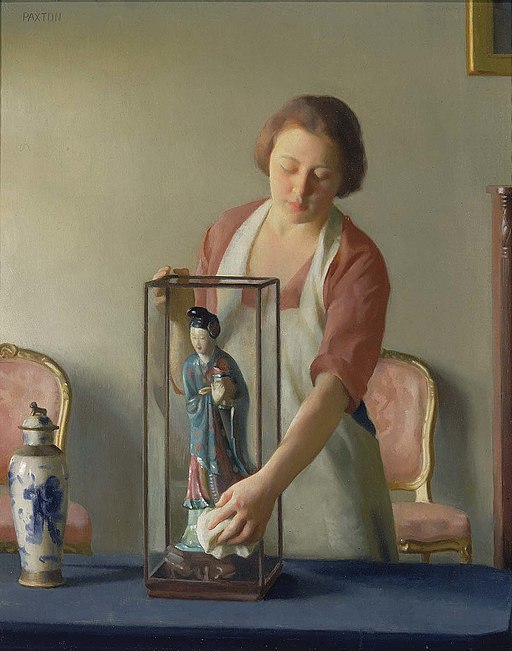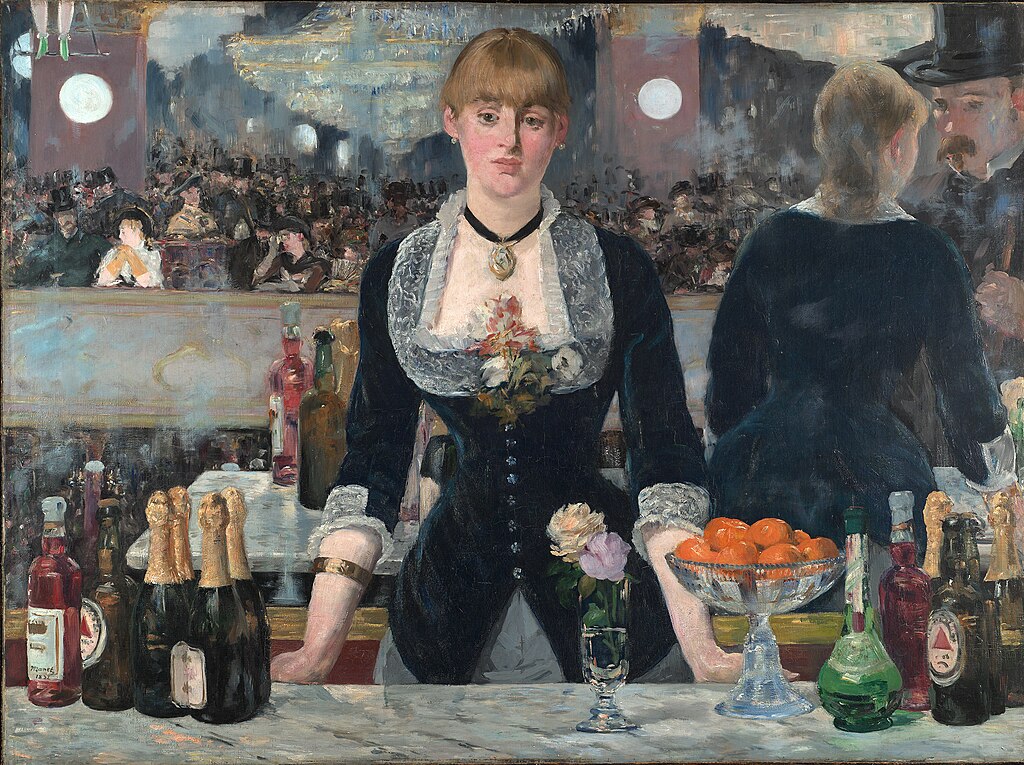
“The Three Graces” by Antonio Canova is a statue of the three mythological charities who were daughters of Zeus. Zeus was the sky and thunder god in ancient Greek religion, who ruled as king of the gods of Mount Olympus.
The three sisters are identified as Euphrosyne, Aglaea, and Thalia, from left to right. They represent youth and beauty, she is named Thalia, mirth, is named Euphrosyne, and elegance is named Aglaea.
The Graces presided over banquets and gatherings, to delight the guests of the gods. The Three Graces have inspired many artists and have served as subjects for many artists.
This masterpiece is carved from white marble and demonstrates Canova’s ability to shape the stone to highlight the Graces’ soft flesh.
This artistry was a trademark of the Canova, and this piece shows his leadership style in the Neoclassical movement in sculpture.
The three goddesses are huddled together, their heads almost touching and standing leaning slightly inward, enjoying their closeness.
Their hairstyles are similar, braided, and held in a knot. A peaceful balance is achieved, as the sisters embrace and become as one in their embrace.
“The Three Graces” by Antonio Canova – Hermitage Museum
They are united by their linked hands and by a scarf which provides some modesty. The unity of the Graces is one of the main themes of this masterpiece.
This original statue, which is in the Hermitage Museum, was sculpted for Empress Josephine, the first wife of Napoleon I.
A second version was commissioned for an English patron, which is now jointly owned by the National Galleries of Scotland and the Victoria and Albert Museum in London.
The Three Graces – Victoria and Albert Museum

The Three Graces – Victoria and Albert Museum
This version “The Three Graces” by Antonio Canova was initially made for the Sculpture Gallery at Woburn Abbey, Bedfordshire. It was initially housed in a specially designed Temple of the Graces.
From left to right, they represent:
- Thalia – youth and beauty
- Euphrosyne – mirth
- Aglaea – elegance
Canova had first depicted the Graces in a painting of 1799. In 1810 he modeled a terracotta sketch which is now in the Musée de Lyon, France
In 1812 Empress Josephine, the first wife of Napoleon I ordered a full-size marble. The original marble version of this statue sculpted for Empress Josephine is exhibited at the Hermitage Museum, St Petersburg.
This second version is now jointly owned by the National Galleries of Scotland and the Victoria and Albert Museum in London and is alternately displayed at each.
Antonio Canova
Antonio Canova (1757 – 1822) was an Italian Neoclassical sculptor, famous for his marble sculptures.
Canova was regarded as one of the greatest of the Neoclassical artists; his artwork was inspired by the Baroque and the Classical Revival.
Canova’s passion in sculptures were either Heroic compositions, compositions of Grace, or Tomb monuments.
Antonio Canova was born in the Venetian Republic, and unfortunately, his father was a stonecutter, died when Canova was three years old,
Fortunately, he was put into the care of his paternal grandfather, who was a stonemason and a sculptor who specialized in altars with statues and low reliefs.
His grandfather led Antonio into the art of sculpting. At the age of nine, Antonio Canova executed two small shrines of Carrara marble, which are still in existence. After these marble works, he was employed under his grandfather as a sculptor.
Antonio Canova worked in Venice, Rome, France, and England, and by 1800, Canova was the most celebrated artist in Europe.
He promoted his reputation by publishing engravings of his works and having marble versions of plaster casts made in his workshop.
He was so successful that he had patrons from across Europe, including France, England, Russia, Poland, Austria, and Holland.
In 1820, Canova made a statue of George Washington for the state of North Carolina.
Three Graces
- Title: Three Graces
- Artist: Antonio Canova
- Year: 1813 – 1816
- Place Created: Italy
- Medium: Marble
- Dimensions Height: 182 cm (71.7 in).
- Museum: Hermitage Museum, Victoria and Albert Museum and National Galleries of Scotland
Antonio Canova
- Name: Antonio Canova
- Born: 1757 – Possagno, Republic of Venice
- Died: 1822 (aged 64) – Venice, Lombardy–Venetia
- Nationality: Italian
- Movement: Neo-Classical
- Notable works:
- Psyche Revived by Cupid’s Kiss
- Psyche Revived by Cupid’s Kiss (Louvre & Hermitage Museum)
- The Three Graces
- Perseus with the Head of Medusa (Metropolitan Museum of Art – MET)
- Pauline Bonaparte as Venus Victrix
A Virtual Tour of the Hermitage Museum
- “Madonna Litta” attributed to Leonardo da Vinci
- Composition VI by Kandinsky
- “Portrait of Doña Antonia Zárate” by Francisco Goya
- “White House at Night” by Vincent van Gogh
- “The Three Graces” by Antonio Canova
- Egyptian Collection in the Hermitage Museum
- Gonzaga Cameo
- “Psyche Revived by Cupid’s Kiss” by Antonio Canova
- “The Stolen Kiss” by Jean-Honoré Fragonard
- “Boulevard Montmartre” by Camille Pissarro
- “Three Tahitian Women Against a Yellow Background” by Paul Gauguin
- “Conestabile Madonna” by Raphael
- “Struggle between Tiger and Bull” by Henri Rousseau
- “Landscape with Diana and Callisto” by Cornelis van Pulenburg
- “The Return of the Prodigal Son” by Rembrandt
- “Daedalus and Icarus” by Charles Le Brun
- Aphrodite Kallipygos
- “Waterloo Bridge. Effect of Fog” by Claude Monet
- “Napoleon during his campaign in Egypt” by Jean-Léon Gérôme
- “Memory of the Garden at Etten” by Vincent van Gogh
- “Boats on the Beach of Saintes-Maries” by Vincent van Gogh
Canova – The Three Graces
Classic Beauties
The Three Graces at the Hermitage in St. Petersburg, Russia
~~~
“Every block of stone has a statue inside it, and it is the task of the sculptor to discover it.”
– Michelangelo
~~~
Photo Credit: 1) By Stebanoid (Own work) [CC BY-SA 3.0 (creativecommons.org/licenses/by-sa/3.0)], via Wikimedia Commons; Colin Smith / The Three Graces in the V&A; Scott Wylie from UK / CC BY (creativecommons.org/licenses/by/2.0)
Popular this Week








 Sponsor your Favorite Page
Sponsor your Favorite Page SEARCH Search for: Search Follow UsJoin – The JOM Membership Program
Sponsor a Masterpiece with YOUR NAME CHOICE for $5
Share this:
- Tweet

